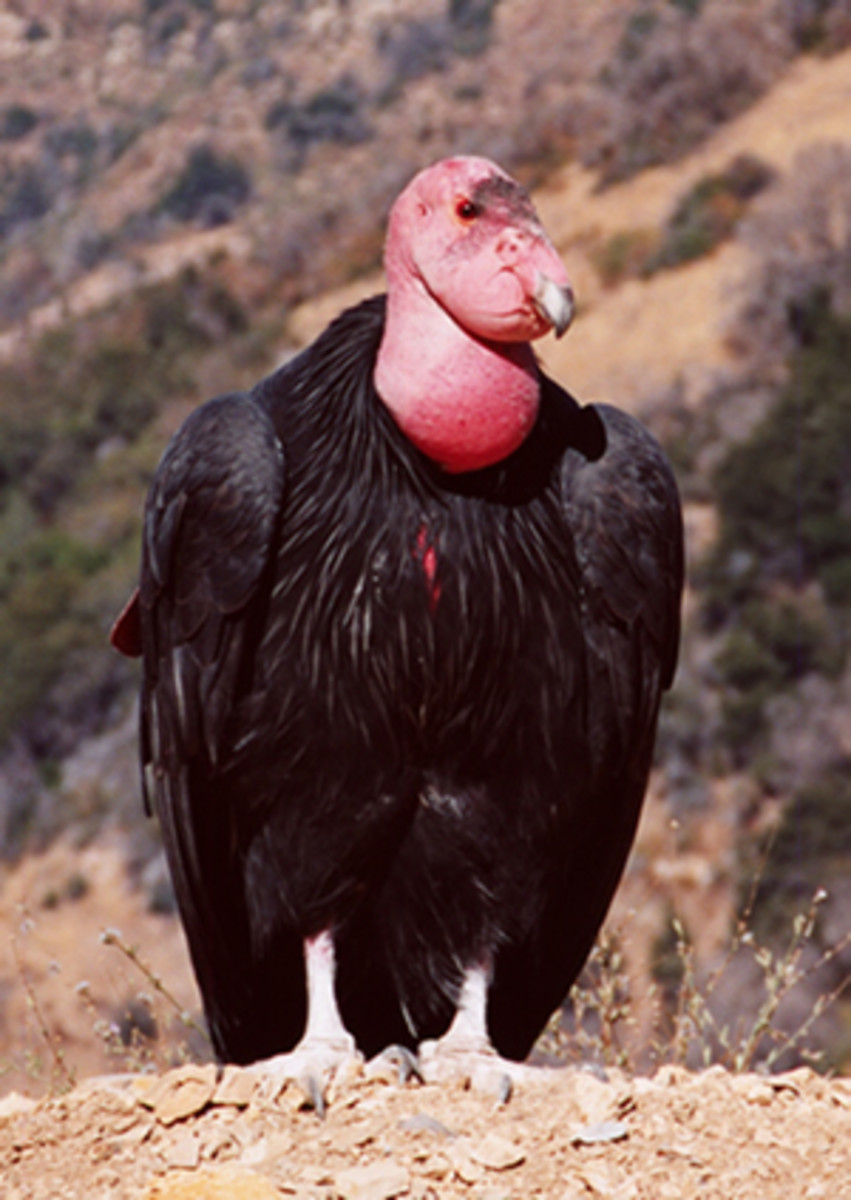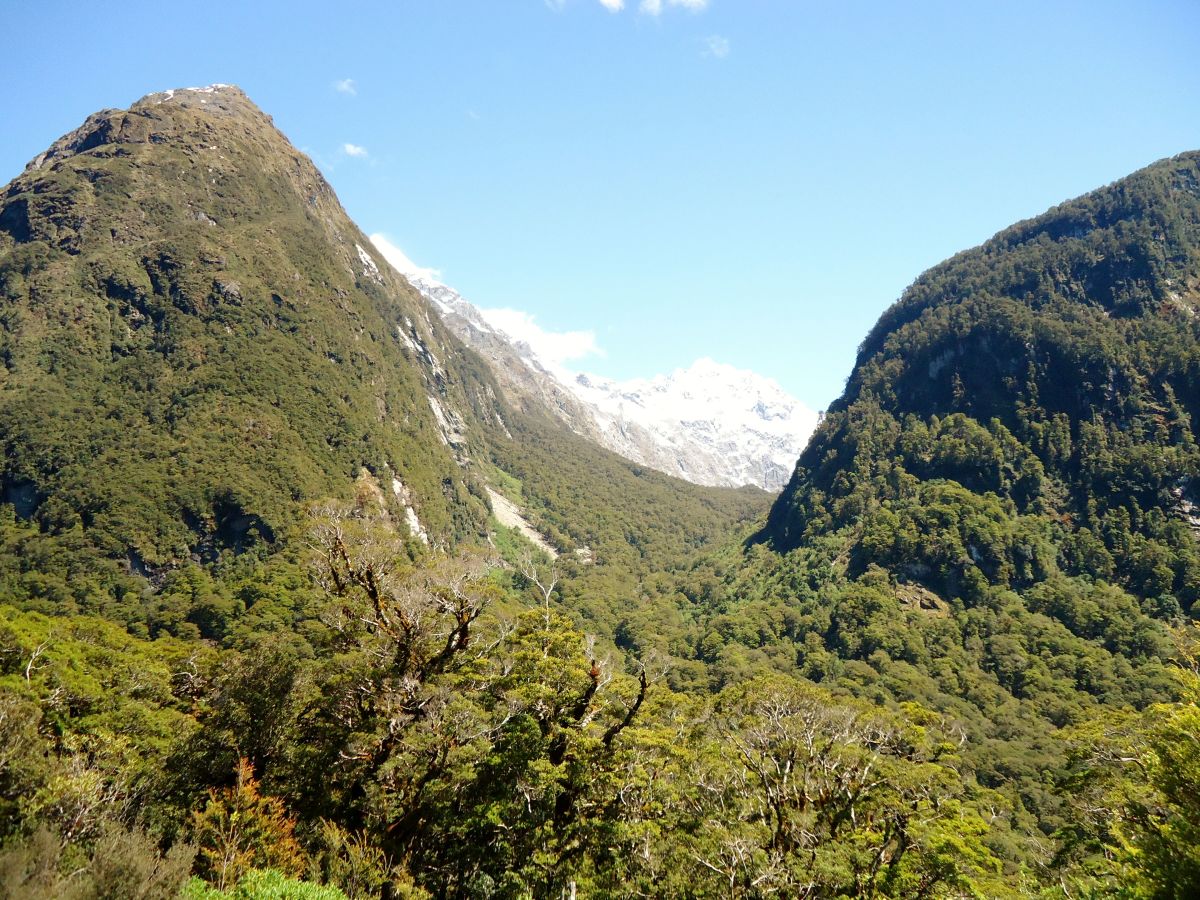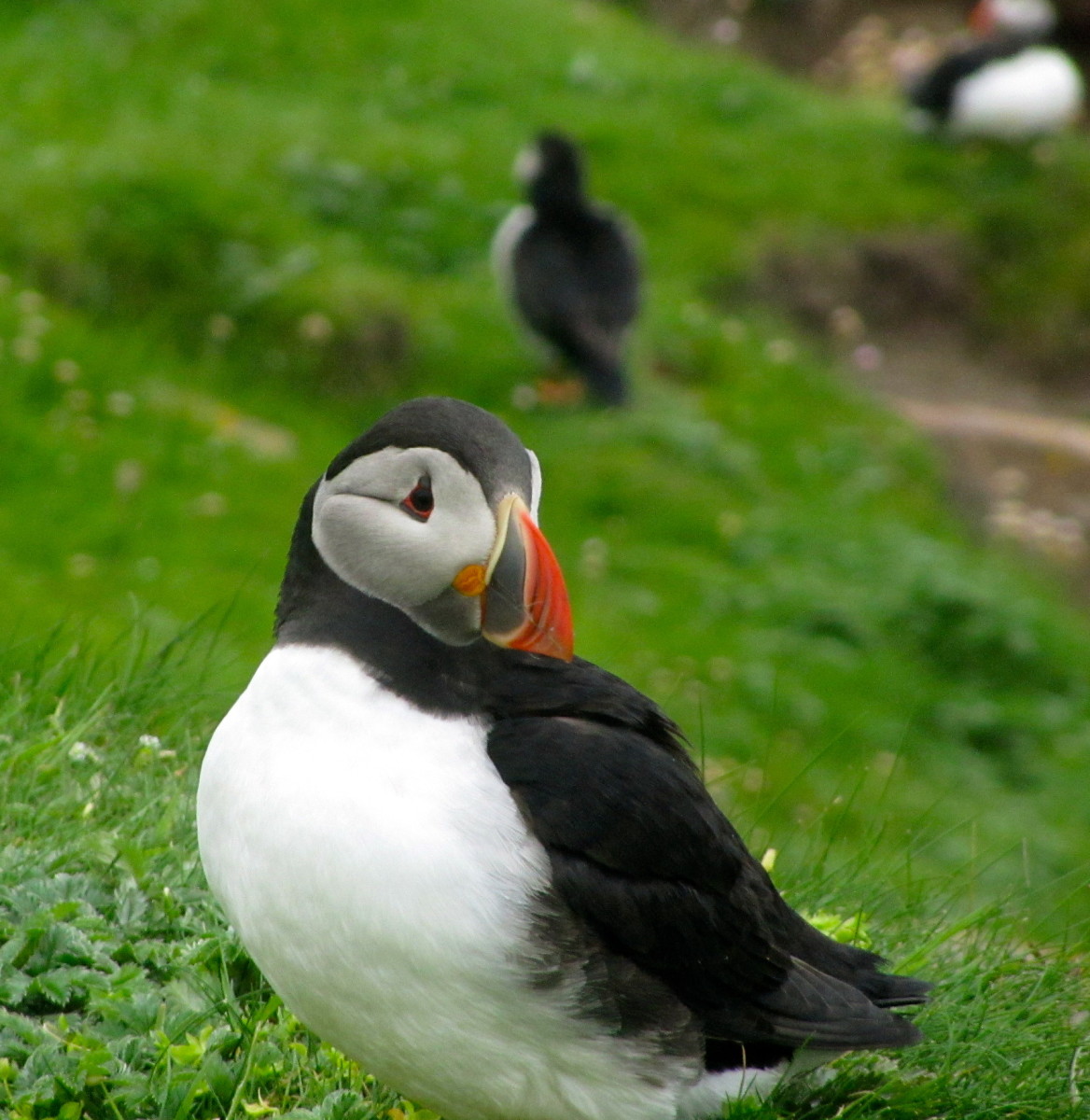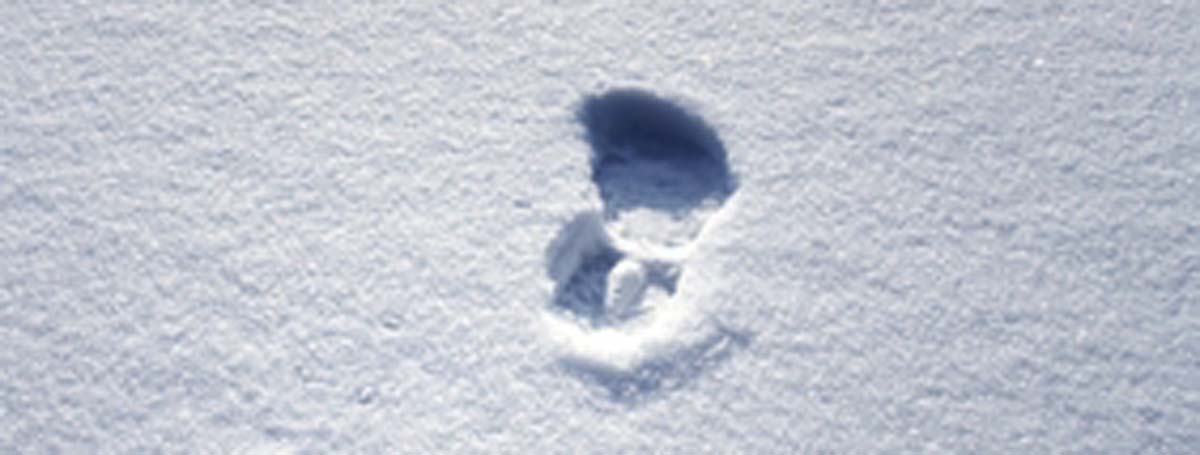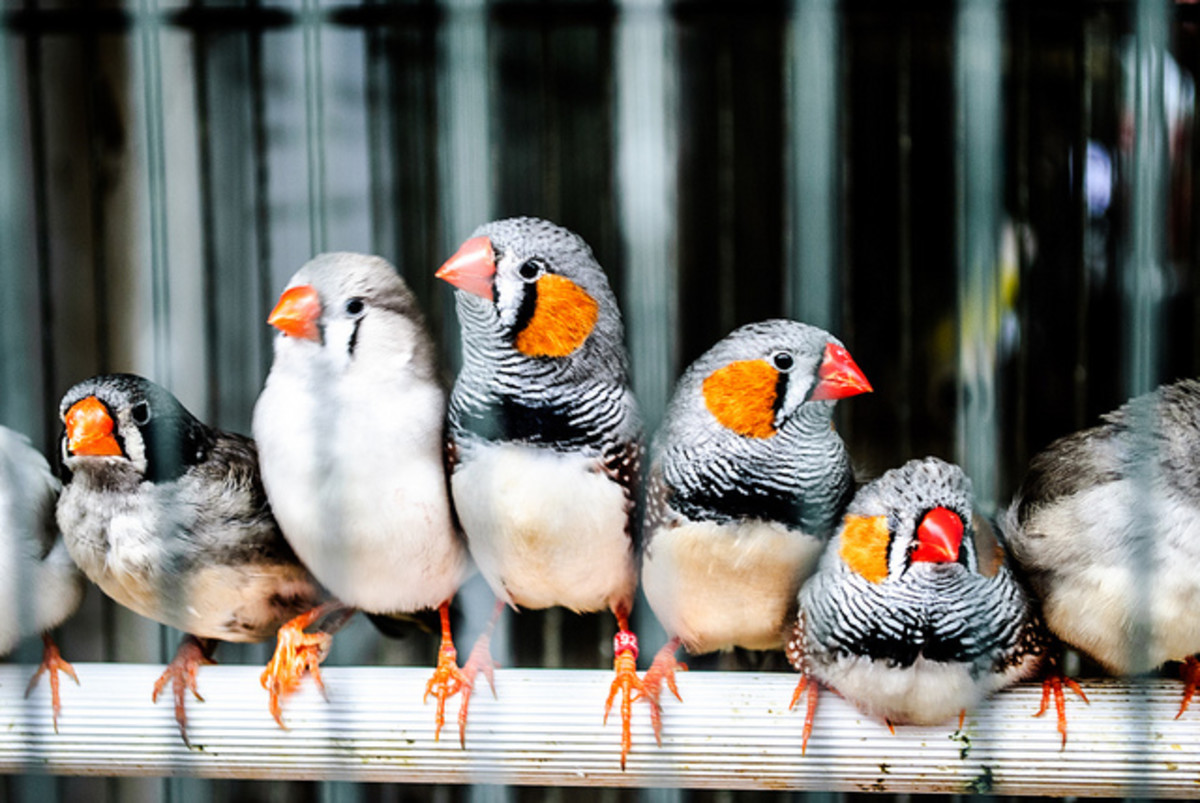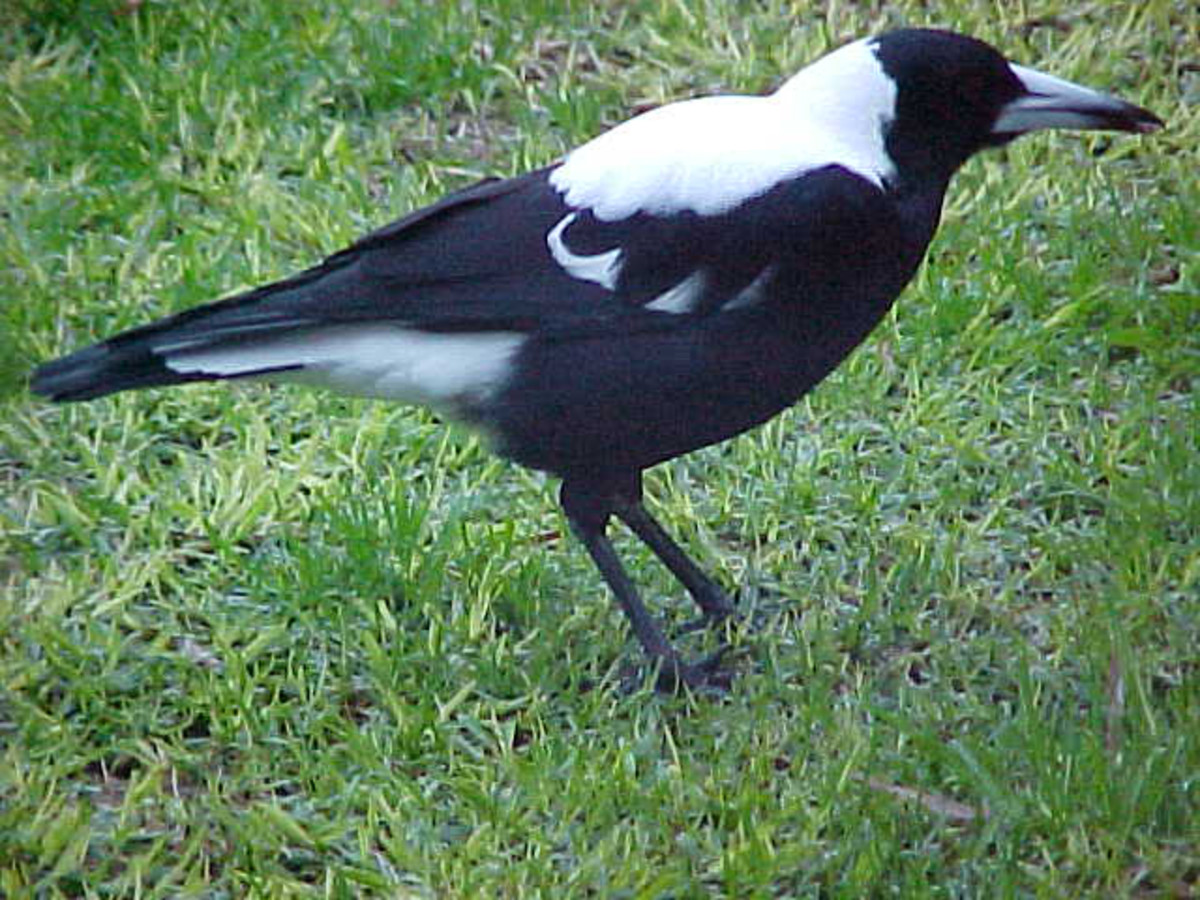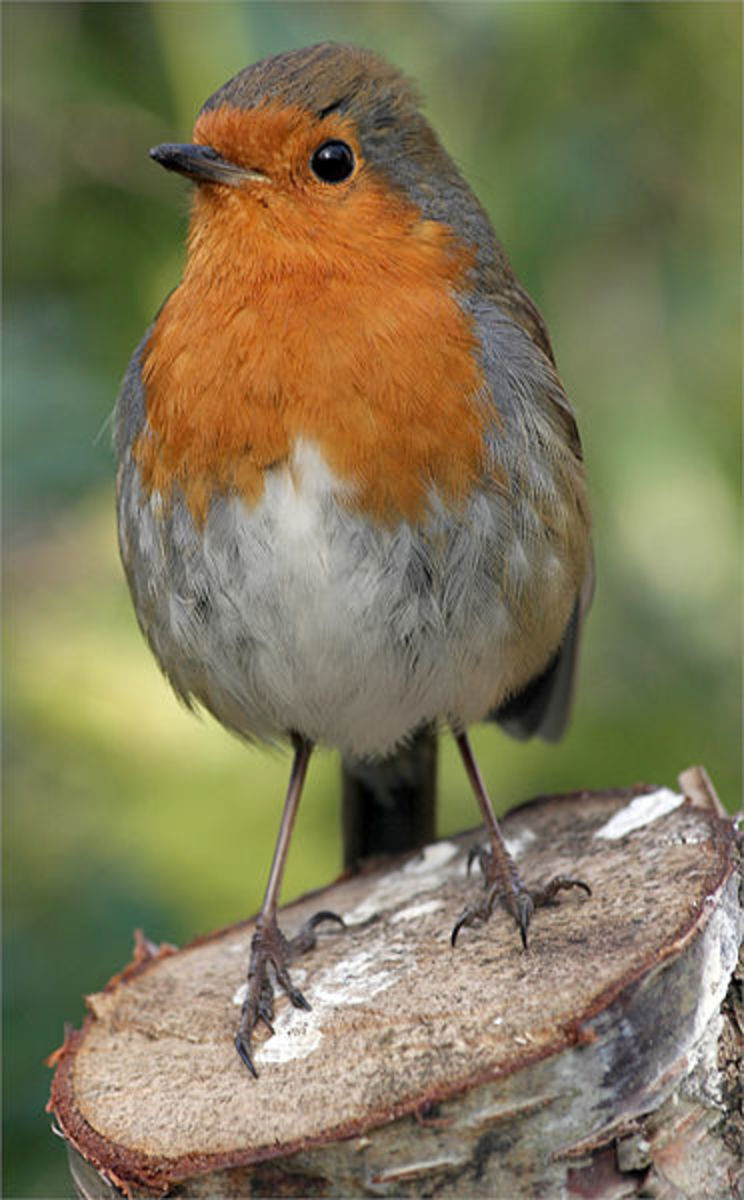New Zealand National Birds
Spring in New Zealand, Ducklings everywhere.
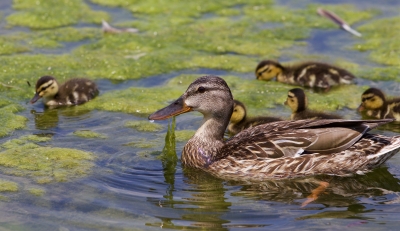
N.Z. Saddleback
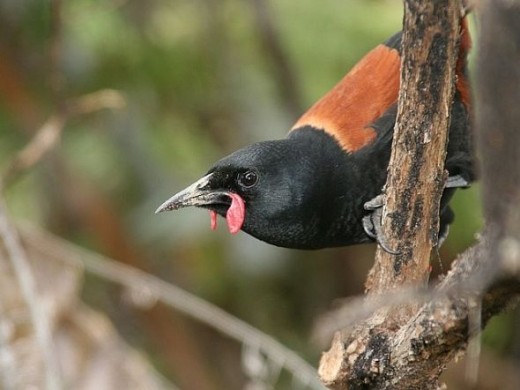
The Saddleback is a previously rare and endangered New Zealand bird of the family Callaeidae.
It is glossy black with a chestnut saddle.
The Saddleback appears to be a remnant of an early expansion of passerines in New Zealand and is one of three New Zealand wattlebirds of the family Callaeidae, the others being the extinct Huia, and the endangered Kokako.
All members of this family have coloured fleshy appendages on either side of the beak known as "wattles". In the case of Saddleback, they are a vivid red in colour.
Their breeding behaviour (nesting near the ground and fledglings hopping noisily around on the ground) make them especially vulnerable to predation from introduced mammals, stouts and rats.
This resulted in both subspecies swiftly disappearing from the New Zealand mainland.
By the turn of the 20th century, both subspecies were confined to a respective island in the far north: Hen Island off Northland, and in the far south, Big South Cape Island off Stewart Island.
Rats arrived on Big South Cape Island in 1963, accidentally introduced as they escaped from the boats of visiting mutton birders.
Only a swift rescue operation by the New Zealand wildlife service (the present day NZ Department of Conservation) saved the subspecies from extinction.
Today, thanks to careful management by DOC, the South Island saddleback population is up to 700, spread over 11 small islands, from the original 36 birds transferred from Big South Cape Island.
The North Island Saddleback has benefited from multiple population reintroductions and is now resident on a large number of off-shore islands and, having become extinct on the mainland 100 years earlier, a breeding colony of North Island Saddleback was successfully established at Karori Wildlife Sanctuary in Wellington in 2002.
The recovery of the Saddleback is considered by many to be one of New Zealand's greatest conservation success stories.
New Zealand Pigeon
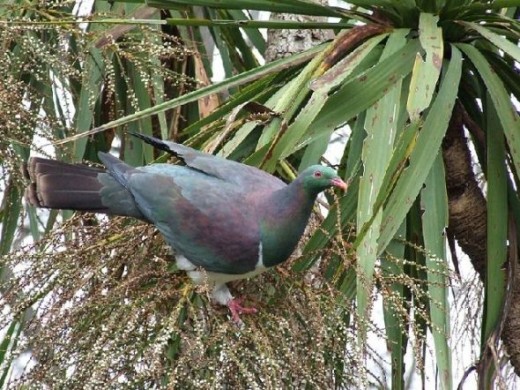
New Zealand pigeons are commonly called wood pigeons but are not the same as the Wood Pigeon (Columba palumbus), which is a member of a different genus.
The New Zealand Pigeon is a large (550 to 850 g) arboreal fruit-pigeon found in forests from Northland to Stewart Island.
New Zealand Pigeons build flimsy, shallow, twiggy nests,laying a single egg,the egg is incubated for 28 days and the young bird takes another 30 days to fledge.
New Zealand Pigeons were once the major dispersers of the seeds of cabbage trees, they eat the small white seeds in autumn and winter.
While fruit comprises the major part of their diets, the New Zealand Pigeon also browses on leaves and buds, especially nitrogen rich foliage during breeding.
One of their favourite leaves to eat is from an introduced plant, the common plum tree.
The diet changes seasonally as the availability of fruit changes, and leaves can comprise the major part of the diet at certain times of the year, such as when there is little fruit around, this I know to be true, for the last three years I have had no plums on my trees, they eat the buds. of the newly forming fruit.
This spring was wet, I never saw the pigeons, had no fruit on my plum trees, most probably because the bees couldn't work, but now late summer I have leaves on my tree, which are usually bare my now, but still no pigeons around.
Breeding generally depends on the availability of ripe fruit, which varies seasonally, annually (good years and bad years), and by location.
Pigeon populations are also under threat from hunting, habitat degradation and poor reproductive success.
Restrictions on the shooting of pigeons were enacted as early as 1864, with total protection since 1921,
The bird is protected under the Wildlife Act and there have been prosecutions for shooting it.
Kokako
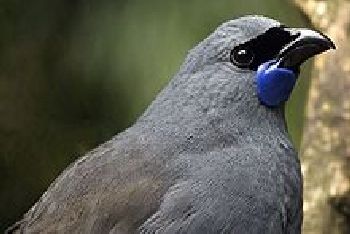
The Kokako was once widespread but is now confined to large areas of native forest.
The North Island Kokako, has blue wattles (although this colour develops with age: in the young of this bird they are actually coloured a light pink).
The South Island Kokako, by contrast has largely orange wattles, with only a small patch of blue at the base.
The Kokako has a beautiful, clear, organ-like song. Its call can carry for kilometres.
Breeding pairs sing together in a bell-like duet for up to an hour in the early morning.
I have heard them singing it is beautiful, never heard a bird sing like that.
If any populations of the South Island Kokako remain they are at present unknown.
The Kokako is a poor flier and seldom flies more than 100 metres.
It prefers to hop and leap from branch to branch on its powerful grey legs.
Its diet consists of leaves, fern fronds, flowers, fruit and invertebrates.
The North Island kokako is now endangered, with an estimated 750 pairs in existence (January 2009).
However, research has shown that female kokako are particularly at risk of predation as they carry out all incubation and brooding throughout a prolonged (50-day) nesting period.
New populations are also being established through releases on predator-free offshore islands.
As a result, conservationists are hopeful of the species' long-term survival.
Kaka - Parrots
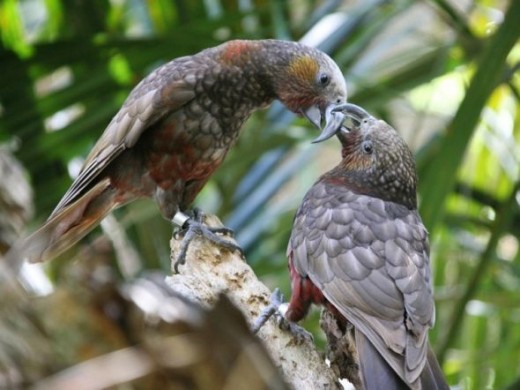
The New Zealand Kaka is a medium sized parrot, measuring 45 cm (18 in) in length and weighing from 390 to 560 grams (14 to 20 oz), with an average of 452 grams (1.00 lb).
The forehead and crown are greyish-white and the nape is greyish-brown.
The neck and abdomen are more reddish, while the wings are more brownish.
The New Zealand Kaka, like many parrots, uses its feet to hold its food.
The New Zealand Kaka lives in lowland and mid-altitude native forest.
Its strongholds are currently the offshore reserves of Kapiti Island, Codfish Island and Little Barrier Island.
It is breeding rapidly in the mainland island sanctuary at Zealandia (Karori Wildlife Sanctuary), with over 300 birds banded since their reintroduction in 2002.
The New Zealand Kaka feeds on fruits, berries, seeds, flowers, buds, nectar, sap and invertebrates.
It uses its strong beak to shred the cones of the kauri tree to obtain the seeds.
It has a brush tongue with which it feeds on nectar, and it uses its strong beak to dig out the grubs of the Huhu beetle.
New Zealand Kaka make their nests in hollow trees, laying clutches of 2 to 4 eggs in late winter.
Both parents assist in feeding the young.
In a good fruiting year pairs can double clutch often utilizing the same nest hole for the second clutch.
It is unusual for a pair to raise more than three chicks in a clutch.
Land of Birds New Zealand
Tui

Tui is an endemic passerine bird of New Zealand. It is one of the largest members of the diverse honeyeater family.
Mostley black, with faded browner patches on the back and flanks,a multicoloured iridescent sheen that varies with the angle from which the light strikes them,except for a small tuft of white feathers at its neck and a small white wing patch, causing it to resemble a parson in clerical attire.
Tuis are considered to be very intelligent, much like parrots. They also resemble parrots in their ability to clearly imitate human speech, and are known for their noisy, unusual call, different for each individual, that combine bellbird-like notes with clicks, cackles, timber-like creaks and groans, and wheezing sounds—unusually for a bird, they have two voiceboxes and this is what enables them to perform such a myriad of vocalisations.
At times in the garden it is hard to know if it a bellbird or a tui, as the tui copies the bellbird.
Tuis and Bell birds do have many scraps, at a food source of a flowering flax plant. the Tui usually wins.
Nectar is the normal diet but fruit and insects are frequently eaten, and pollen and seeds more occasionally.
They are the main pollinators of flax, kowhai, kaka beak and some other plants.
Male tuis can be extremely aggressive, chasing all other birds (large and small) from their territory with loud flapping and sounds akin to rude human speech.(True they do, but they are very quite you can get very close to them.
This is especially true of other tuis when possession of a favoured feeding tree is impinged. (Kowhia trees in particular), will often erect their body feathers in order to appear larger in an attempt to intimidate a rival.
The powered flight of tuis is quite loud as they have developed short wide wings, giving excellent maneuverability in the dense forest they prefer, but requiring rapid flapping.
They can be seen to perform a mating display of rising at speed in a vertical climb in clear air, before stalling and dropping into a powered dive, then repeating. Much of this behaviour is more notable during the breeding season of early spring—September and October.
Females alone build nests of twigs, grasses and mosses.
Tuis are found through much of New Zealand, particularly the North Island, the west and south coasts of the South Island,
Stewart Island and the Chatham Islands—where an endangered sub-species particular to these islands exists.
New Zealand Bellbird

The New Zealand Bellbird are only found in New Zealand. They are endemic to our country.
It has greenish colouration and is the only living member of the genus Anthornis.
The bellbird forms a significant component of the famed New Zealand dawn chorus of bird song that was much noted by early European settlers.
Its bell-like song is sometimes confused with that of the Tui.
The bellbird wins the award for the sweetest singer in Aotearoa.
(I agree with that statement, it is a beautiful pleasure to hear them).
The species is common across much of New Zealand and its offshore islands as well as the Auckland Islands.
Males are olive green with a dark purplish sheen on their head and black outer wing and tail, and red eyes.
They are about 17–20 cm from the tip of their beak to the end of their tail and males weigh about 32 grams.
The bellbird is found throughout both the main islands of New Zealand apart from the north of the North Island.
Bellbirds feed on nectar, fruit and insects.
They have a special tongue a bit like a toothbrush, which enables them to sip the nectar out of the flowers.
As honeyeaters they play an important part pollinating numerous native plants such as mistletoe, fuchsia and kowhai.
Female Bellbird
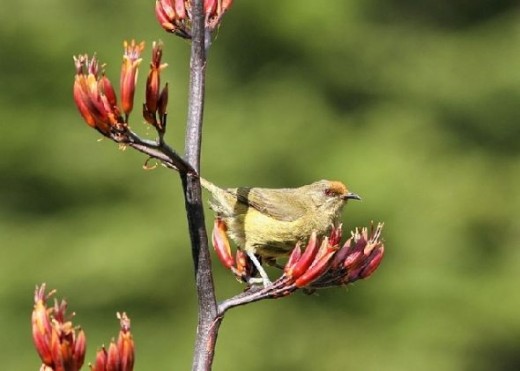
Females Bellbirds are a duller olive brown with a blue sheen on the head and yellowish-white curving from the base of the bill to below the eye, has red eyes.
Weigh about 25gms.
The female bird builds a nest of loosely built twigs lined with feathers and fine grass and lays three to five eggs pinkish with brown spots and blotches, from September to January where two broods can be produced.
Insects are important for females and their chicks during the breeding season.
Juveniles females have brown eyes and a light yellow cheek stripe.
Juvenile males have dull brown-black outer wing and tail feathers.

